====================================================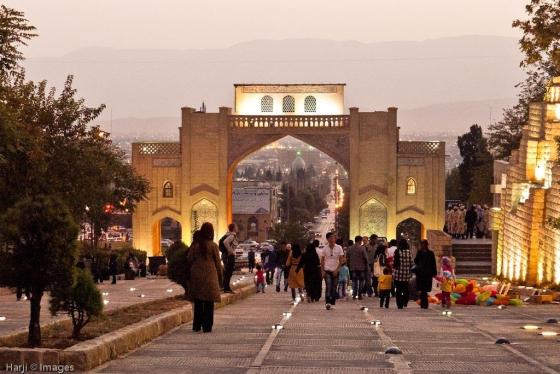
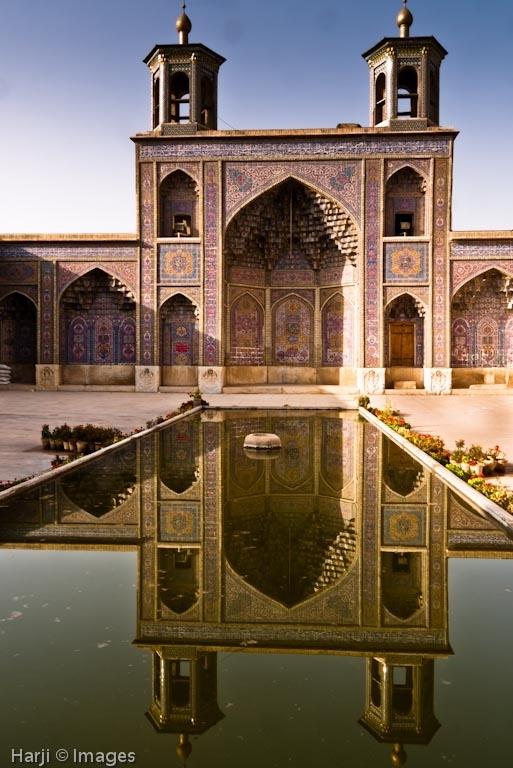

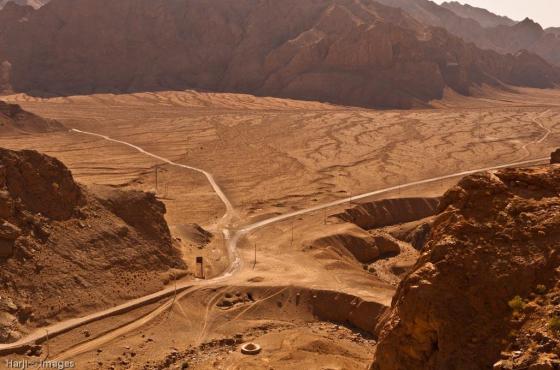
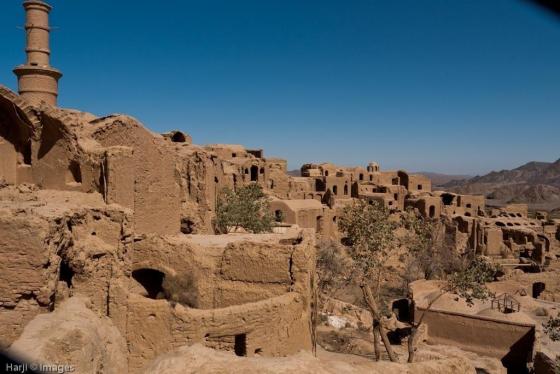

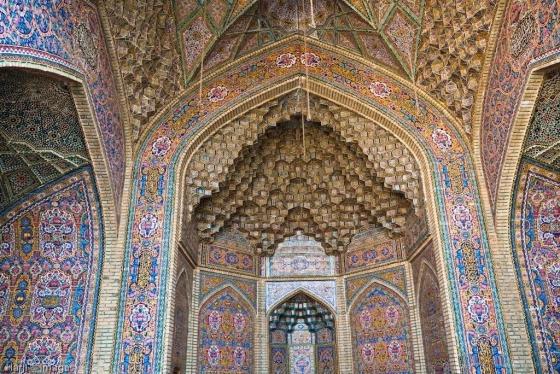
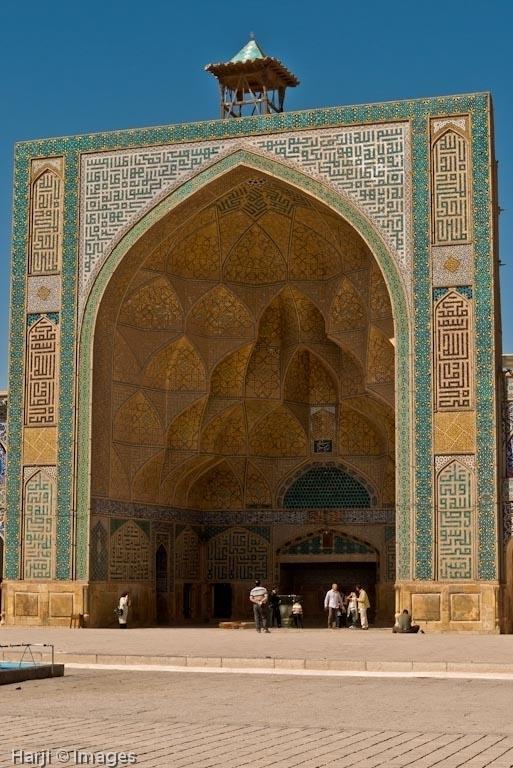
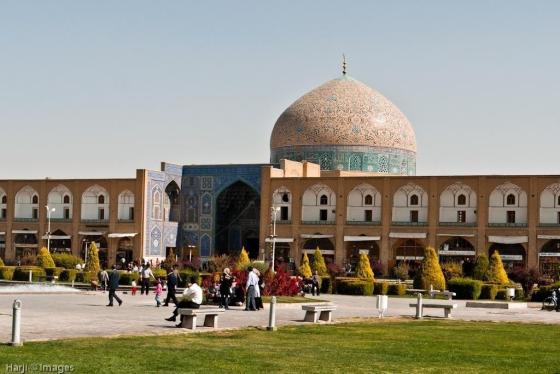
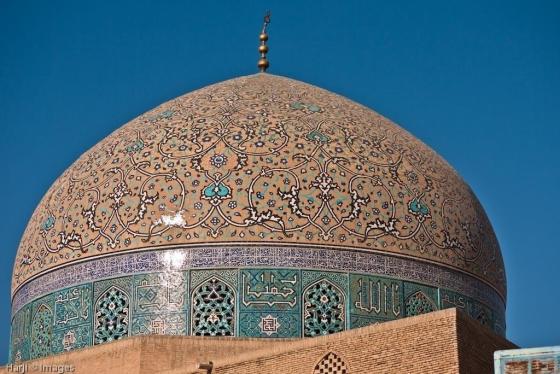

Darvaze-Qur'an or the
Qur'an gate , in Shiraz, Iran, is an ark shaped monument near Qur'an
Square. It used to be on Shiraz-Esfahan road at the far northeast of the
city.
A hand written Qur'an was placed at the top chamber of the arc, so that the passengers who were leaving the city or entering, would pass under the Qur'an for good luck, blessings and safety on their travels.
A hand written Qur'an was placed at the top chamber of the arc, so that the passengers who were leaving the city or entering, would pass under the Qur'an for good luck, blessings and safety on their travels.
Photo: Muslim Harji, Montreal, PQ, Canada. © Copyright.
* * * *

Nasr al-Mulk MASJID, Shiraz, Iran. Photo: Muslim Harji, Montreal, PQ, Canada. © Copyright.
* * * *

The interior pf the Nasr
al-Mulk Mosque, Shiraz, Iran. The MASJID extensively uses colored glass
in its facade, and displays other traditional elements such as panj k
seh-i (five concaves) in its design. Photo: Muslim Harji, Montreal, PQ,
Canada. © Copyright.
* * * *

"Roads from nowhere to nowhere." Dasht-e-Kavir desert. Eastern Iran.
Photo: Muslim Harji, Montreal, PQ, Canada. © Copyright.
* * * *

Kharanaq is an ancient
mud-brick village, continuously inhabited for over 4000 years. It is in
the middle of two deserts and surrounded by beautiful mountains. Parts
of the village are over 1000 years old. Only a few families live there
now –as most of them have moved to the more comfortable and modern parts
of the village. Photo: Muslim Harji, Montreal, PQ, Canada. © Copyright.
* * * *

The Room at Alighapoo
Palace. Situated on the sixth floor, there are deep curvy niches cut on
the walls in form of shelves which account for the pleasing sound
effects in the room. This room is also tastefully decorated, but the
acoustic quality of the room is its main attraction. All carvings are
done in forms of various musical instruments of the time. Carvings in
the Roof of the room at the Alighapoo Palace was designed in a way that
two musicians created enough echo for impression of a full orchestra.
Photo: Muslim Harji, Montreal, PQ, Canada. © Copyright.
* * * *

Built during the Safavid
period in the 17th century, this masjid represents the finest in
Islamic Architecture of Iran. The Shah MASJID of Esfahan, named as the
Imam Mosque once Ayatollah Khomeini became Iran's Supreme Leader
following the disposal of the Shah in 1979, is registered along with the
Naghsh-i Jahan Square (below) as a UNESCO World Heritage Site. Its
construction began in 1611, and its splendor lies in the beauty of its
seven-colour mosaic tiles and calligraphic inscriptions. Photo: Muslim
Harji, Montreal, PQ, Canada. © Copyright.
* * * *

Naghsh-i Jahan Square
with calligraphy at its finest, which include the Names of Allah, the
Prophet Muhammad S.A.W.W, and Hazrat Ali A.S.as well as Qur'anic Ayats. Photo: Muslim Harji, Montreal, PQ, Canada. © Copyright.
* * * *

Sheikh Lotfollah Masjid; see details next photo.
Photo: Muslim Harji, Montreal, PQ, Canada. © Copyright.
* * * *

The magnificent dome of
the Sheikh Lotfollah MASJID, which is referred by different names such
as 'the mosque with the great dome' and 'the masjid of great purity and
beauty'. The pale tiles of the dome change color, from cream through to
pink, depending on the light conditions. It is one of the architectural
masterpieces of Safavid Iranian architecture, standing on the eastern
side of Naghsh-i Jahan Square, Isfahan, Iran. Construction of the mosque
started in 1603 and was finished in 1618. Photo: Muslim Harji,
Montreal, PQ, Canada. © Copyright.
====================================================

.jpg)

.jpg)
.jpg)
.jpg)
.jpg)
.jpg)

0 comments:
Post a Comment